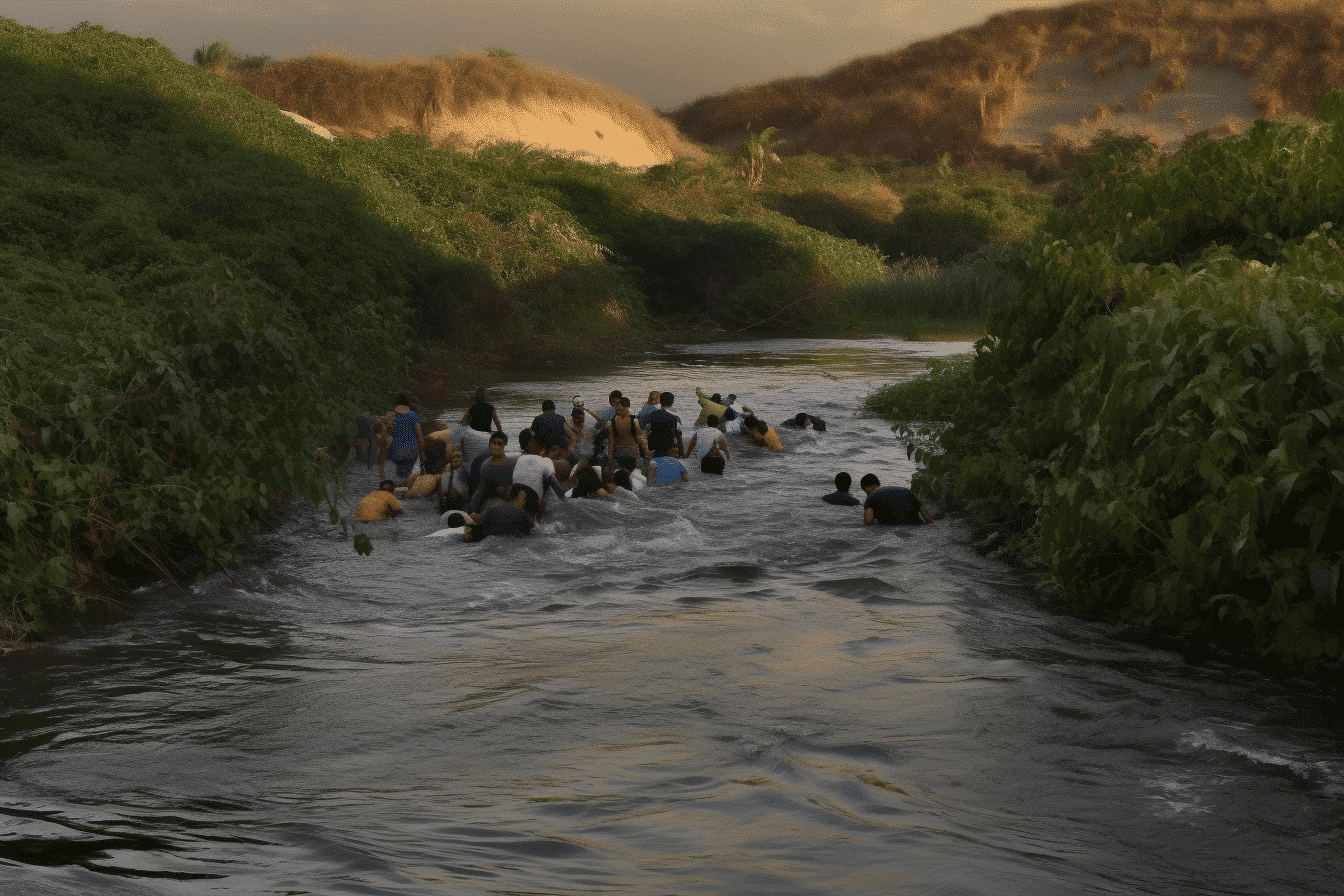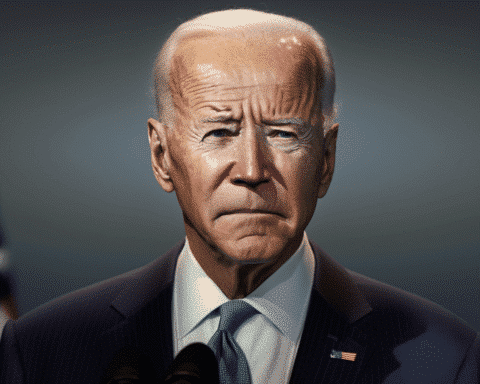A new regulation announced Thursday by the Biden administration will bar asylum seekers who do not apply online or seek protection in a transit country from applying for asylum at the U.S.-Mexico border.
The new strategy aims to curb unauthorized border crossings and concurrently create legal immigration avenues, such as establishing 100 regional migration centers across the Western Hemisphere, confirmed by administration officials.
Although it does not completely prohibit asylum, the policy imposes significant constraints on those who cross the border illicitly without first exploring a legal route. Initially introduced in February, the rule will be officially enforced from Thursday onwards. Over 50,000 public comments were made on the rule, but it eventually remained unchanged. Legal challenges are expected, considering the rule’s resemblance to the stricter measures proposed by former President Donald Trump in 2019, which a federal appeals court blocked.
The government represents the rule as a strategy to decrease migrant numbers at the border while still offering legitimate asylum seekers protection opportunities. Officials highlighted the evolving dynamics of immigration that previously mainly involved Mexican adults, who could be quickly repatriated. Now, migrants originate from nations throughout the Western Hemisphere and beyond.
“Global economic and political instability, including in the Western Hemisphere, is driving the highest levels of migration since World War II,” the rule states.
A record number of crossings from Mexico was reported last year due to the “unprecedented migration from diverse countries including Brazil, Colombia, Cuba, Ecuador, Haiti, Nicaragua, Peru, and Venezuela.”
However, the rule immediately faced backlash. Immigrant support groups branded it as “ludicrous,” “life-threatening,” and “misguided.”
Jeremy Konyndyk, the president of Refugees International, criticized the Biden administration for prioritizing border politics over refugee safety, stating that the new rule formalizes broad restrictions on asylum access.
The rule does provide exceptions for individuals facing acute medical emergencies or imminent, extreme threats to life or safety. It does not apply to unaccompanied children but will affect families.
The U.S. also plans to establish regional hubs across the hemisphere, where migrants can apply for migration to the U.S., Canada, or Spain. While two hubs in Guatemala and Colombia have already been announced, the locations of the others are yet to be disclosed. The officials, speaking anonymously, discussed these ongoing plans that still need to be made public.
These measures aim to change the way migrants approach the U.S. southern border fundamentally. With the COVID-19 pandemic-related restrictions (Title 42) ending this week, border crossings have reached record highs even while people were being swiftly returned–a total of 2.8 million times. There has been no significant immigration law reform by Congress in decades.

With the new rules in effect, U.S. officials are preparing for a potential surge in border crossings. After Title 42 is lifted, those caught crossing illegally will face a five-year ban on return and possible criminal prosecution. The administration estimates that up to 11,000 migrants per day may attempt to cross the border post-lifting of Title 42, barring any changes.
Around 24,000 law enforcement officers are stationed along the U.S.-Mexico border, with an additional 1,500 active-duty military personnel deployed to support the U.S. Customs and Border Protection. Furthermore, 2,500 National Guard troops are already present to assist CBP.
The potential for chaos was acknowledged by Biden, who said, “I think it’s going to be chaotic for a while.” Haitian, Venezuelan, Cuban, and Nicaraguan migrants will be returned to Mexico if they fail to apply online, find a sponsor, and pass a background check. Each month, the U.S. will admit 30,000 individuals from these nations with work permits valid for two years. Mexico will continue to accept an equivalent number of individuals who cross the border illegally.
In Reynosa, a Mexican city bordering McAllen, Texas, groups disseminated flyers in English and Haitian Creole on Tuesday, instructing migrants how to register for the CBP One app, which enables them to schedule an appointment for admission. To alleviate widespread dissatisfaction, authorities plan to increase the number of appointments, prioritizing those waiting for the longest.
A Haitian migrant, Phanord Renel, speaking from Reynosa’s central square, expressed his reluctance to risk deportation by crossing the border illegally. Haiti (Haiti) is complicated, so we don’t want to return there. “We will have to put up with it here if we can’t cross. Maybe the government will do something for us. But cross illegally — no.”
Furthermore, immigration officials are gearing up to deploy up to 1,000 asylum officers to conduct expedited screenings for asylum seekers to rapidly determine whether an individual qualifies to stay in the U.S.
Most individuals attempting illegal entry into the U.S. via the Mexico border escape persecution or poverty in their home countries. They seek asylum and are typically allowed to remain in the U.S. while processing their cases. This can take years due to the overburdened immigration court system, leading to an increased number of individuals attempting to enter the U.S. via the border.
Despite numerous asylum requests, the legal pathway remains narrow, and most applicants fail to meet the criteria.
Preparations have been underway for months to establish interview rooms and phone lines at border facilities to expedite removal proceedings, focusing on migrants who bypass legal routes to the U.S. This is part of a larger initiative aimed at revising the approach to immigration at the U.S. southern border.
As the Biden administration moves to implement these new rules and procedures, the future of immigration at the U.S.-Mexico border remains uncertain. Critics warn that the measures may endanger vulnerable migrants, while proponents argue that they will stem the tide of illegal crossings and provide more structured legal pathways. Regardless, the world will be watching closely as these changes take effect, shaping the journey of countless individuals seeking a new life in the United States.




